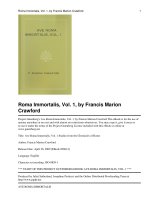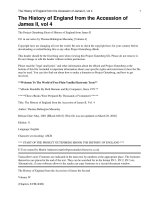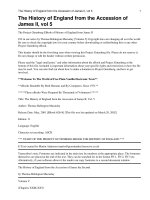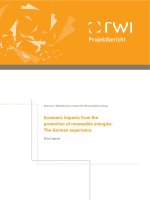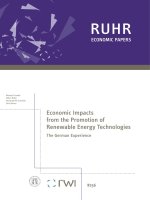Antibacterial constituents from the roots of Stemona collinsae plant collected in Laos
Bạn đang xem bản rút gọn của tài liệu. Xem và tải ngay bản đầy đủ của tài liệu tại đây (276.21 KB, 6 trang )
������������������������������������������������������������������������������������������������������������������������������������������������������������������������������������������������������������������������������������������������������������������������������������������������������������������������������������������������������������������������������������������������������������������������������������������������������������������������������������������������������������������������������������������������������������������������������������������������������������������������������������������������������������������������������������������������������������������������������������������������������������������������������������������������������������������������������������������������������������������������������������������������������������������������������������������������������������������������������������������������������������������������������������������������������������������������������������������������������������������������������������������������������������������������������������������������������������������������������������������������������������������������������������������������������������������������������������������������������������������������������������������������������������������������������������������������������������������������������������������������������������������������������������������������������������������������������������������������������������������������������������������������������������������������������������������������������������������������������������������������������������������������������������������������������������������������������������������������������������������������������������������������������������������������������������������������������������������������������������������������������������������������������������������������������������������������������������������������������������������������������������������������������������������������������������������������������������������������������������������������������������������������������������������������������������������������������������������������������������������������������������������������������������������������������������������������������������������������������������������������������������������������������������������������������������������������������������������������������������������������������������������������������������������������������������������������������������������������������������������������������������������������������������������������������������������������������������������������������������������������������������������������������������������������������������������������������������������������������������������������������������������������������������������������������������������������������������������������������������������������������������������������������������������������������������������������������������������������������������������������������������������������������������������������������������������������������������������������������������������������������������������������������������������������������������������������������������������������������������������������������������������������������������������������������������������������������������������������������������������������������������������������������������������������������������������������������������������������������������������������������������������������������������������������������������������������������������������������������������������������������������������������������������������������������������������������������������������������������������������������������������������������������������������������������������������������������������������������������������������������������������������������������������������������������������������������������������������������������������������������������������������������������������������������������������������������������������������������������������������������������������������������������������������������������������������������������������������������������������������������������������������������������������������������������������������������������������������������������������������������������������������������������������������������������������������������������������������������������������������������������������������������������������������������������������������������������������������������������������������������������������������������������������������������������������������������������������������������������������������������������������������������������������������������������������������������������������������������������������������������������������������������������������������������������������������������������������������������������������������������������������������������������������������������������������������������������������������������������������������������������������������������������������������������������������������������������������������������������������������������������������������������������������������������������������������������������������������������������������������������������������������������������������������������������������������������������������������������������������������������������������������������������������������������������������������������������������������������������������������������������������������������������������������������������������������������������������������������������������������������������������������������������������������������������������������������������������������������������������������������������������������������������������������������������������������������������������������������������������������������������������������������������������������������������������������������������������������������������������������������������������������������������������������������������������������������������������������������������������������������������������������������������������������������������������������������������������������������������������������������������������������������������������������������������������������������������������������������������������������������������������������������������������������������������������������������������������������������������������������������������������������������������������������������������������������������������������������������������������������������������������������������������������������������������������������������������������������������������������������������������������������������������������������������������������������������������������������������������������������������������������������������������������������������������������������������������������������������������������������������������������������������������������������������������������������������������������������������������������������������������������������������������������������������������������������������������������������������������������������������������������������������������������������������������������������������������������������������������������������������������������������������������������������������������������������������������������������������������������������������������������������������������������������������������������������������������������������������������������������������������������������������������������������������������������������������������������������������������������������������������������������������������������������������������������������������������������������������������������������������������������������������������������������������������������������������������������������������������������������������������������������������������������������������������������������������������������������������������������������������������������������������������������������������������������������������������������������������������������������������������������������������������������������������������������������������������������������������������������������������������������������������������������������������������������������������������������������������������������������������������������������������������������������������������������������������������������������������������������������������������������������������������������������������������������������������������������������������������������������������������������������������������������������������������������������������������������������������������������������������������������������������������������������������������������������������������������������������������������������������������������������������������������������������������������������������������������������������������������������������������������������������������������������������������������������������������������������������������������������������������������������������������������������������������������������������������������������������������������������������������������������������������������������������������������������������������������������������������������������������������������������������������������������������������������������������������������������������������������������������������������������������������������������������������������������������������������������������������������������������������������������������������������������������������������������������������������������������������������������������������������������������������������������������������������������������������������������������������������������������������������������������������������������������������������������������������������������������������������������������������������������������������������������������������������������������������������������������������������������������������������������������������������������������������������������������������������������������������������������������������������������������������������������������������������������������������������������������������������������������������������������������������������������������������������������������������������������������������������������������������������������������������������������������������������������������������������������������������������������������������������������������������������������������������������������������������������������������������������������������������������������������������������������������������������������������������������������������������������������������������������������������������������������������������������������������������������������������������������������������������������������������������������������������������������������������������������������������������������������������������������������������������������������������������������������������������������������������������������������������������������������������������������������������������������������������������������������������������������������������������������������������������������������������������������������������������������������������������������������������������������������������������������������������������������������������������������������������������������������������������������������������������������������������������������������������������������������������������������������������������������������������������������������������������������������������������������������������������������������������������������������������������������������������������������������������������������������������������������������������������������������������������������������������������������������������������������������������������������������������������������������������������������������������������������������������������������������������������������������������������������������������������������������������ntly, compound 6 was
deduced to be stemanthren A [3].
6'
1'
O
H
4
22
O
H
8 8'
7
9'
O
10
10'
2'
7'
9
O
4'
O
1
6
3
6
HO
O
Stigmasterol (2)
Sesamin (1)
2"
H3CO
HO
1"
3
1 6
1'
6' 3'
H3CO
OH
CH3
7
3
HO
2,2’,5’-Trihydroxy-5-methyl biphenyl (4)
H
H3CO
1
1"
2"
1'
1
6
HO
3
4
1
1'
HO
CH3
Stemanthren C (3)
O
3'
OH
CH3
OH
6'
OCH3
OH
H3CO
CH3
Stemanthren A (6)
4-Hydroxy-3-methoxybenzaldehyde (5)
Figure 1. Structures of 1-6
Previously, stemanthren derivatives showed various biological activities such as
cytotoxic as well as antioxidant activities [3, 8]. Thus, compounds 3 and 6 were
tested their antimicrobial activity and the result was illustrated in Table 1.
Accordingly, compound 3 could inhibit the growth of Staphylococcus aureus.
Table 1. Antimicrobial activity of 3 and 6
IC50 values (µg/ml)
Gram (+)
Sample
3
6
S.
aureus
108.5
> 128
B.
subtilis
> 128
> 128
L.
fermentum
> 128
> 128
Fungus
Gram (-)
S.
enterica
> 128
> 128
E.
coli
> 128
>128
P.
aeruginosa
> 128
> 128
C.
albican
> 128
> 128
119
Tran Cong So, Hoang Thi Duyen, Vong Anatha Khamko and Dang Ngoc Quang
3.
Conclusions
Sesamin (1), stigmasterol (2), stemanthren C (3), 2,2’,5’-Trihydroxy-5-methyl
biphenyl (4), 4-Hydroxy-3-methoxybenzaldehyde (5) and stemanthren A (6) were
purified and structural determined from the n-hexane and ethyl acetate extract of the
roots of Stemona collinsae plant collected in Laos. Found that Staphylococcus aureus
was suppressed by stemanthren C (3), suggesting the ability to use Stemona collinsae
as a new antibiotic.
REFERENCES
[1] S. Kongkiatpaiboon, V. Keeratinijakal and W. Gritsanapan, 2010. Microscopic
characterization as a tool for separation of Stemona groups. Pharmacognosy
Journal, Vol. 2, pp. 1-4.
[2] B. Rutnakornpituk, C. Boonthip, J. Kerdpan, N. Fakfeang and W.anatee Kholam,
2018. Antioxidant activity, total phenolic and flavonoid contents and analyses of
active compounds in Stemona collinsae Craib crude extracts. NU. International
Journal of Science, Vol. 15, pp. 25-36.
[3] V. Khamko, 2013. Study on the chemical composition and biological activity of
three species of Stemona sp. growing in Laos. Doctoral thesis, HNUE.
[4] L. T. H. Yen, P. T. Anh, S. Thoumma, D. N. Quang, P. H. Dien, 2016.
Phytochemical study on Stemona collinsae Craig. roots collected in Laos. J. Sci.
Techn., Vol. 54, pp. 14-19.
[5] F. Hadacek and H. Greger, 2000. Test of antifungal natural products
methodologies, comparability of result and assay choice. Phytochem. Anal., Vol.
11, pp. 137-147.
[6] H. D. Scott, R. A. Coburn, A. Soshinsky, M. Huntley, 2003. Non-halogenated
biphenyl triol compounds, antimicrobial compositions containing the same, and
methods of using the same. US Patent, 20030139479.
[7] A.W. Khan, S. Jan, S. Parveen, R.A. Khan, A. Saeed, A.J. Tanveer, A.A. Shad,
2012. Phytochemical analysis and enzyme inhibition assay of Aerva javanica for ulcer.
Chem. Cent. J., 6, 76.
[8] V. Khamko, D. N. Quang, P. H. Dien, 2012. A cytotoxic stilbenoid and 4Hydroxycinnamates from Stemona cochinchinensis plants, growing in Savannakhet
province, Laos PDR. Journal of Sciences of HNUE, Vol. 57, No. 8, pp. 9-15.
120


